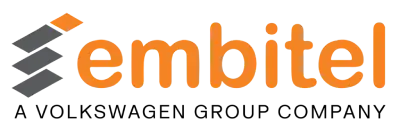About the Customer:
Our customer is a Tier-1 supplier in the automotive domain, known for delivering high-performance embedded systems to global OEMs. With a growing focus on electrification, they aimed to enhance the intelligence and safety of their Battery Management System through a standards-compliant and scalable software platform.
Business Challenges:
What happens when your battery’s brain isn’t quite sharp enough?
In electric vehicles, the Battery Management System (BMS) is the silent guardian of performance, safety, and longevity. For this Tier-1 supplier, their existing BMS ECU needed a major software uplift—one that could reliably manage battery safety, state monitoring, and diagnostics while being ASIL-C compliant and AUTOSAR ready.
The key challenges were:
- Developing platform software that complies with ISO 26262 (ASIL-C)
- Seamlessly managing CAN-FD communication and diagnostics
- Ensuring the solution could integrate into their existing toolchains and development ecosystem
- Building in flexibility for future enhancements and configuration changes
Embitel’s Solution:
A software foundation built like a battery—powerful, smart, and protected.
Our engineering team partnered with the client to deliver an AUTOSAR-compliant ECU platform software tailored for a high-voltage Battery Management System.
Key highlights of our solution:
- Platform Development: We developed ASIL-C compliant platform software using the COMASSO Basic Software stack. The architecture included support for:
- Low-level Drivers
- Hardware Abstraction Layer (HAL)
- Communication Stack
- Diagnostics modules (UDS ISO14229 and ISO-TP)
- Communication Layer: Integrated CAN-FD driver, interface layers, and network management modules to handle high-speed, reliable in-vehicle communication.
- Safety First: Embedded the Hitex Safety Library, ensuring compliance with ISO 26262 standards for functional safety in EV systems.
- Toolchain Compatibility: Used the GNU GCC toolchain and Renesas CS+ for development and debugging, along with Samdia CAN Analyzer for system validation.
- Bespoke Stack Configuration: Architected the base software (BSW) to allow smooth access to BSW signals via the Signal Interface layer, making it easier to configure, adapt, and validate software modules in future updates.
Embitel Impact:
When the client approached us, they were aiming for a delicate balance — enhancing their Battery Management System’s intelligence and safety, without tearing apart what was already working.
What they needed wasn’t just AUTOSAR compliance; they needed it without friction — no disruption to existing workflows, no rebuilding from scratch.
- Our team took this as both a challenge and an opportunity.
By carefully architecting the platform software around the COMASSO BSW stack and integrating with Hitex Safety Library, we ensured that ASIL-C compliance was not an afterthought, but an intrinsic part of the build. We didn’t replace their legacy strengths—we strengthened them. - Diagnostic precision was elevated using UDS ISO 14229 and ISOTP protocols, allowing real-time visibility and fault isolation in battery behaviour. At the same time, CAN-FD communication layers were added to streamline inter-module data flow, empowering the ECU with faster, more reliable messaging.
- However, scalability was the real clincher.
We developed modular components that could adapt to evolving BMS requirements — supporting future feature rollouts without deep code rewrites. The result? A platform that’s not just compliant, but sustainable and upgrade-ready. - Thanks to this pre-validated and safety-integrated software stack, the client saw a marked reduction in testing effort, fewer integration cycles, and a faster path to deployment.
- This project wasn’t just about compliance.
It was about designing an intelligent foundation for tomorrow’s EV batteries.
By blending standard compliance with a scalable design, the BMS platform is now not only safer but smarter—built to support the EV revolution.
Tools and Technologies:
- COMASSO BSW Development Tool
- GNU GCC Tool Chain
- Renesas CS+ Debugging Environment
- CAN Analyzer – Samdia
- Hitex Safety Library
- UDS & CAN-FD Stack
- ISO26262 ASIL-C Implementation


